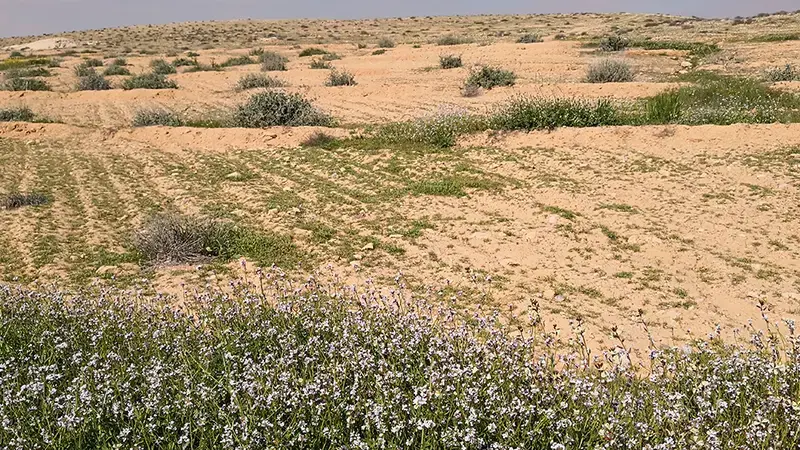Strengthening the Resilience of Rangeland Watersheds in Jordan

- Stefan Martin Strohmeier - Scientist - Restoration Initiative on Dryland Ecosystems
- Mira Haddad - Research Associate - Spatio-temporal assessment
- Dhehibi Boubaker - Senior Natural Resources Economist
- Theib Oweis – Senior Researcher
ICARDA introduces community-based rehabilitation of degraded agro-pastoral watersheds through mechanized micro-water harvesting and flood-irrigation agriculture.
Jordan’s Badia, a dry area covering 90% of the country, has become severely degraded due to overexploitation of its natural resources and poor land management, exacerbated by climate change. Degradation and desertification threaten the rangeland ecosystem’s functionality and the rural agro-pastoral communities’ livelihoods.
ICARDA and the Jordanian National Agricultural Research Center (NARC) developed a community-based watershed rehabilitation approach that i) effectively rehabilitates degraded rangelands in upland-watershed areas through mechanized micro water harvesting and the plantation of native shrub seedlings, and ii) enhances localized downstream-watershed barley production through a revived and upgraded indigenous flood-water harvesting technique (Marab). Joint resources management and community empowerment ensure the long-term sustainability of the integrated watershed approach.
Advanced research was carried out at the Badia Research Site (BRS) close to Al-Majidyya village in the Middle Badia of Jordan, thus understanding socio-ecological dynamics including the long-term impact of rehabilitation on surface runoff and soil erosion through transition state modeling. Combined monitoring and modeling proved that the rehabilitation approach enhances the interception, storage, and efficient use of the rainwater through plants, which will boost and sustain the native cover, increase agricultural production, enhance soil health (incl. soil carbon), and generally stabilize the rangeland ecosystem and improve its services.
The approach has a vast out-scalability across marginal drylands of MENA and beyond, targeting mostly < 250 mm average annual rainfall zones. A novel out-scaling methodology identifies potentially suitable areas through merging traditional site suitability assessment (based on GIS layers) with dynamic surface hydrological investigations using harmonized global modeling tools.
-------------------------------------------------------------------------------------
IMPACT
- The merger of advanced monitoring and modeling proved that surface runoff and soil erosion significantly decrease and approximate the pre-degradation baseline dynamics through/after rehabilitation.
- Increased watershed level productivity, land cover, and carbon stocks recommend the rehabilitation package as highly suitable to achieve Land Degradation Neutrality in dry agro-pastures/rangelands.
- The Jordanian Government adopted the mechanized micro water harvesting approach targeting the annual rehabilitation of 1,600 hectares of degraded Badia.
- The downstream flood-irrigation barley agricultural zone (Marab) has high economic profitability and cost-effectiveness, with an estimated Internal Rate of Return (IRR) of > 20% and an acceptable break-even point for investment in this innovation which would occur in year two.

Further Reading:
Rehabilitation of degraded rangelands in Jordan: The effects of mechanized micro water harvesting on hill-slope scale soil water and vegetation dynamics: https://hdl.handle.net/20.500.11766/12602
Enhancing a Traditional Water Harvesting Technique in Jordan’s Agro-pastoral Farming System: https://hdl.handle.net/20.500.11766/11506
Suitability of arid land rehabilitation technologies: simulation of water harvesting based solutions in Middle Eastern agro-pastures: https://hdl.handle.net/20.500.11766/12616
